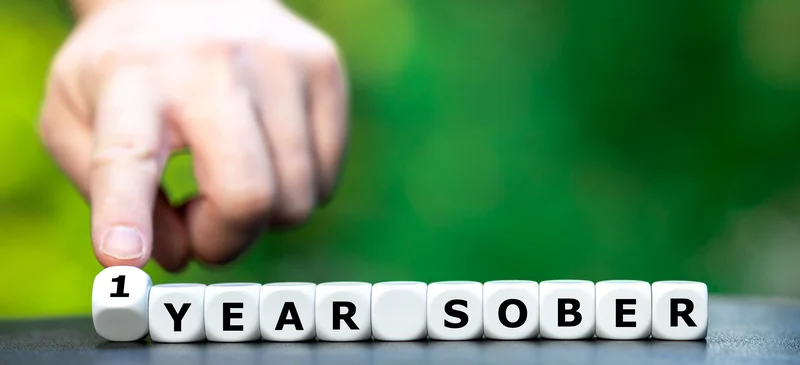Sober living
How Long Does Weed Stay in Your System?

Because THC leaves your bloodstream fairly quickly, blood tests for weed use aren’t as effective https://ecosoberhouse.com/ as pee tests.. After weed enters your system, it can take between one to three hours to feel the complete effects and another one to three hours for those effects to wear off, according to Healthline. The effects of edibles last much longer than smoking, according to the American Addiction Centers. Drinking sufficient amounts of water may also help to remove THC metabolites through urine and bowel movements. Getting plenty of sleep can also help to avoid any decreases in metabolism.
How much do you have to smoke to fail a drug test?
Ultimately, there is no definitive method to get cannabis out of the body faster. The most common ways marijuana can be tested for is in urine, saliva, blood, or hair. Most testing practices look for the presence of THCCOOH which has a much longer half-life (the time it takes for 50% of the substance to be excreted) than delta-9 THC.

News

The half-life of THCCOOH is hours in occasional users compared to 3-13 days in regular users. An older study notes a slight increase in THC levels following exercise in people who regularly use cannabis. This may be due to exercise causing fat cells to release THC. As such, exercise right before a drug test may increase the likelihood of a positive test result. Additionally, tests can detect THC for longer periods in individuals who use cannabis products more frequently. This is because chronic cannabis use will result in THC accumulating in fatty tissues, which will result in a slower elimination of metabolites.
How Long Does Weed Stay in Your System FAQs

Research on how long a test can detect cannabis shows a wide range of averages. Research from 2017 estimates a detection window for a single cannabis cigarette of about 3 days. Numerous studies were conducted producing non-coherent results. However, there is a silver lining connecting a majority of conducted studies of THC elimination speed. Testing urine for marijuana (THC-COOH metabolite to be exact) is the standard procedure that employers use in order to determine if you’ve been using cannabis.
- If you smoke or vape weed, THC enters your bloodstream through your lungs, then moves to your brain and other organs.
- As such, exercise right before a drug test may increase the likelihood of a positive test result.
- The nationwide push to legalize marijuana got a major boost when the Biden administration announced a plan to reclassify marijuana from a Schedule I drug to a Schedule III drug in April 2024.
- Weed might be great for a number of reasons but THC elimination time is definitely not one of them.
There aren’t many options to get the weed out of your system faster. Exercising regularly (although not right before a test), healthy eating and hydration can all help, but they won’t substantially change your THC levels. Similarly, following a healthy dietary plan may also help with this process of metabolizing THC. Additionally, consuming fiber can help to improve digestion and promote bowel movements, which can aid in the elimination of THC metabolites from the body. While drinking lots of water is unlikely to affect a drug test significantly, severe dehydration might. The number of evaluated urine samples exceeded 6,000 individual samples.
- Firstly, it is important to understand the difference between qualitative and quantitative testing.
- Obviously, you can also quicken up the speed of THC elimination with complete THC detox kits, or even completely forgo the detox process by using synthetic urine for a drug test.
- How “high” a person feels is also not a reliable measure, because numerous factors other than THC dose can intensify or weaken this feeling.
- After weed enters your system, it can take between one to three hours to feel the complete effects and another one to three hours for those effects to wear off, according to Healthline.
Body fat
USA TODAY is exploring the questions you and others ask every day. From “How long does alcohol stay in your system?” to “What is Delta-8?” to “Where is weed legal?” – we’re striving to find answers to the most common questions you ask every day. Head to our Just Curious section to see what else we can answer for you. The nationwide push to legalize marijuana got a major boost when the Biden administration announced a plan to how long does weed stay in your system reclassify marijuana from a Schedule I drug to a Schedule III drug in April 2024. Quantitative testing measures the actual quantity of a substance.

But in general, if you use weed just one time, tests might detect THC for up to 72 hours (three days) afterward. This means that a person who smokes several times over several days has consumed a higher THC dose than someone who smokes once, so they are more likely to test positive. Drug tests can detect relatively small quantities of THC, and the amount of THC in a given cannabis cigarette varies.
What influences how long tests detect weed?
Tetrahydrocannabinol (THC) is the chemical in weed that gives users that high feeling. Every person metabolizes weed differently, which impacts how long it’ll show up on a test. A false-negative is when the test result is negative for a substance, but the person has been using the substance. A false-positive is when the test result is positive for a substance, but the person hasn’t been using the substance. Firstly, it is important to understand the difference between qualitative and quantitative testing.

One important factor is also the kind of urine THC tests that are being used. In the calculations above, it was presumed that the detection of THC in Alcoholics Anonymous urine is being conducted with a standard drug screening test with a 20 ng/ml cut-off rate. Some laboratories might also be using an older lab screening test with 50 ng/ml cut-off rate.
- Delta-9 THC undergoes metabolism in the liver to another psychoactive compound, 11-OH-THC, and then further metabolism to the inactive THCCOOH.
- It is impossible for anyone to accurately state the length of time it would take for somebody to test clean for marijuana in a drug test.
- The only way to make sure you pass a drug test is to stay away from weed.
- Exercising regularly (although not right before a test), healthy eating and hydration can all help, but they won’t substantially change your THC levels.
- After helping out almost 200 people (in the comments), we have decided to put together a THC elimination calculator.
- It needs to be done in a laboratory and is used when a more defined value is needed, say, for prosecution.
Cannabis sativa contains over 421 chemicals including 61 different cannabinoids, of which delta 9-tetrahydrocannabinol (delta-9 THC) is considered the most psychoactive. Delta-9 THC has a thick, sticky consistency (somewhere between a solid and a liquid) and is easily vaporized. It readily dissolves into lipids and fats, and once in the body gets deposited in fatty (adipose) tissue, and in the liver, lungs, and spleen. How “high” a person feels is also not a reliable measure, because numerous factors other than THC dose can intensify or weaken this feeling. Without sensitive laboratory equipment, a person cannot reliably determine the strength of their cannabis.

